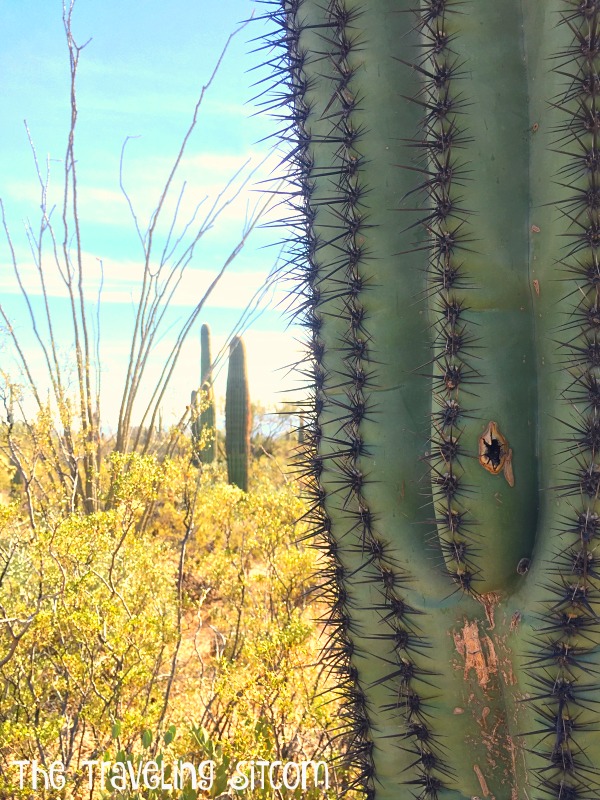First things first: it’s pronounced “suh-wahr-oh.” Do you know how many years I have mispronounced this cactus? Yep, I am ridiculously southern and can’t seem to shake it.
Anyway, we decided to make the short drive out to Saguaro National Park to see what all the fuss was about.
And there you have it. Cactus as far as you can see.
Since 1933 this extraordinary giant cactus has been protected within Saguaro National Park. There are two sections of the park, one on the west side of Tucson and one on the east side. Our visit this week was to the west.
The Sonoran Desert is one of the hottest and driest regions on the continent. In the summer, it is common for the temperatures to climb over 100 degrees and it gets less than 12 inches of rain in a typical year.
With that in mind, it was surprisingly lush and beautiful!
The plants and animals are able to survive this environment with adaptations specially designed for desert survival. At first glance, desert life seems rather unfriendly.
Talk about a bunch of defense mechanisms! It would not be a great thing to trip and fall while hiking around this part of the country!
But in an extreme environment such as this, I imagine a great defense is necessary.
Even the local wildlife is extreme. The Sonoran Desert is home to 18 species of rattlesnakes. There are also poisonous Gila Monsters, and Coyotes, and Javelinas.
Not a lot of friendly in this part of the country, that’s for sure.
The star of the show is the Saguaro Cactus. It is not only the state symbol of Arizona, but a universally recognized image of the Southwest!
It is the largest and slowest growing of all cacti. The shorter ones to the left of me in the photo above are about 75 years old. The one to the right of me could be as old as 200 years.
These amazing cacti can weigh up to 8 tons, partly because of the large amount of water the stems can hold. Giant saguaro cacti, unique to the Sonoran Desert, sometimes reach a height of 50 feet.









Love reading about your adventures! Thanks for sharing!
Very interesting. I have pronounced Saguaro wrong for years also. Thanks to your adventures I now know the correct pronunciation.